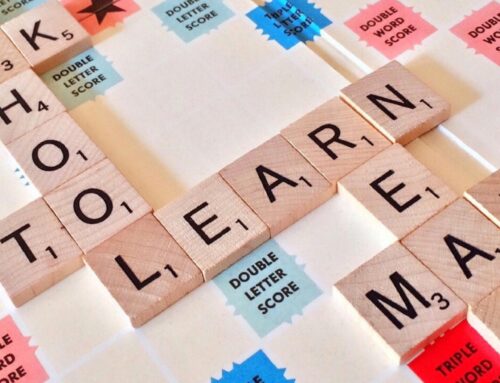As out-of-the-box thinkers, homeschoolers are often looking for ways to expedite their educational journey, especially when it comes to college. Today, we’re exploring one crucial method to accelerate your student’s college career—taking CLEP exams.
What exactly is CLEP? It stands for College Level Examination Process, a series of 33 tests in five academic areas offered by the College Board throughout the year. CLEP exams are structured to mirror the types of courses taken during freshman and sophomore year. The CLEP exam covers subject areas like Composition and Literature, World Languages, Business, History and Social Science, and Science and Mathematics.
Your student can begin taking CLEP exams as soon as he or she is ready. There are no specific age requirements, and testing is open to homeschoolers. The tests are pass/fail, and each one costs roughly $100 after fees. (If your student does not pass a CLEP, he or she must wait a minimum of three months before re-taking it.)
Each test takes approximately 90 minutes and is administered via computer. While most of the tests are multiple-choice, some subjects (like composition) involve essay questions. Your student may prepare for CLEP exams through the official CLEP Study Guide.
But before your student dives in headfirst, it’s important to consider the advantages and disadvantages of taking CLEPs. Let’s explore some of them!
Why take CLEP exams?
1. Your student can earn early college credit with CLEP tests
Passing a CLEP exam could mean that your student receives college credit (partial or full) for the equivalent course. It could also allow him or her to bypass certain prerequisite and general education classes, and move on to more advanced subjects sooner. What’s more, your student can include CLEPs on a transcript. In order to “CLEP out” of a course, your student needs to earn enough credit hours to equal the institution’s required credit hours for that particular course.
2. CLEPs can save time and money
At an average of $100 or less per exam, CLEPs are significantly less expensive than college courses. If your student’s college of choice accepts CLEP credits in place of courses, he or she may complete as many of the assessments as possible. This could significantly reduce the amount of money and time it takes to earn a degree. (Some schools cap CLEP credits to a certain number per year, so be sure you get familiar with the college’s policies regarding CLEPs.)
3. CLEPs were designed with independent workers and self-starters in mind
Your homeschool student is already ahead of the game, as far as nontraditional learning is concerned. CLEP exams—also considered nontraditional—were originally designed for adults who received on-the-job training and knowledge and wanted to earn college credit for what they’d learned. But since your student is likely used to working independently and diving into the subjects of interest, CLEPs could be a great way to get another step ahead.
Why avoid CLEPs?
1. Some colleges don’t grant or accept CLEP credits
Before your student jumps into taking CLEPs, check with your colleges of choice to familiarize yourself with their policies regarding CLEP credits. It’s possible that the college might not accept or recognize them, either from existing or transfer students (even if your student’s first school accepted them). In this case, you wouldn’t want your student to waste time. Also remember that some colleges only allow for partial or elective CLEP credits.
2. Your student’s specific major might not count CLEPs
Some degrees—like education or nursing—require a certain number of credits in order for your student to be eligible to take a licensing exam at the end of college. If your student CLEPs out of too many courses on the way to graduation, some of those credits might not count in the end, resulting in more time spent completing college.
3. Your student could become ineligible for scholarships
If your student takes all the CLEPs before enrolling in college for freshman year, that could render him or her ineligible for freshman year scholarships. That doesn’t mean your student can’t take all the CLEPs if that’s a goal—but it’s best not to take them all before enrolling for freshman year.
How to include CLEPs on your student’s transcript
To include CLEPs on your student’s transcript, you’ll want to clearly communicate that these are college-level credits. You can list them as “Dual Enrollment,” “College Equivalency,” or simply “CLEP Courses.” As an alternative, you can have a separate, official transcript of your student’s CLEP test results sent to the college where he or she is applying.
How do you know if your student is ready for CLEPs?
Because there is no age requirement for taking CLEPs, your student can start taking the exams whenever he or she has become familiar with the subject matter and is ready to test on it. Your student is ready to take CLEP exams if he or she is:
- Ready to take on college-level work
- An independent learner and self-starter
- Interested in bypassing general education courses offered during the first two years of college
Additionally, if your student has opted to attend a less-selective community college or university, those colleges are more likely to recognize CLEPs and award credits accordingly.
Wrapping up
CLEPs could be a great option, but do your research first! Your student could benefit greatly from getting CLEP credits toward a degree. But before diving in, you’ll both want to become familiar with the CLEP credit policies of all colleges of choice. Under the right circumstances, CLEPs could help your student accelerate his or her college experience, saving both time and money in the process.









[…] there are multiple ways to get PLA credit—including taking exams similar to CLEP for college credit—the approach we’re focusing on in this blog post is portfolio review. This is when you work […]
What is the difference between the “AP / College Chemistry beta test,” and the “AP / College Chemistry test”?
Hello John,
We are not experts on AP, so it’s best that you contact College Board or go to their AP website, https://apstudents.collegeboard.org/
to contact them regarding the difference between those two tests.
My son did 3 CLEP courses in 2020, but because of covid only took one test. Can I still asterisk them as a CLEP course on his transcript? Do I put an explanation on the bottom of the transcript?
You can mark them as CLEP courses in the course description. There is no need to add an explanation because colleges know
what CLEP courses are.